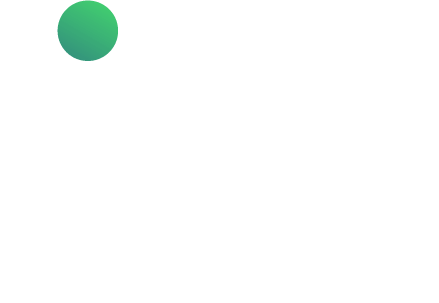Executive Report
The M&E Industry's Need for Digital Transformation
EMBRACING CLOUD TECHNOLOGY NOW
TO MITIGATE RISKS, ENSURE BUSINESS
CONTINUITY AND THRIVE IN 2021

Executive Summary
The world has changed. For media companies, doing nothing is not an option.
2020 has exposed us to extreme, unwelcome change. But with the right strategic choices, media companies can not only survive intact, but stronger and better prepared for the future than ever.
If there’s one thing we’ve learned through hindsight, it’s that doing nothing is not an option. We’re going to look at exactly what you can do to protect your media business against disruption, and to get it to a place where it can flourish. Remarkably, the very measures designed to mitigate disaster can boost productivity, quality and revenue.
In this report, we’ll look at the most pressing business imperatives for surviving change:
How to avoid production disruption, and the strategies and tools that will enable remote operations in the short term while providing your business with a long term solution.
Learn why *80% of M&E CFOs are implementing cost-containment measures to deal with the financial fallout brought on by unforeseen challenges, and how they’re embracing cloud-based collaboration tools to enable growth and flexibility.
Mitigating risk to revenue by protecting the quality of your output and why your employees are your most important asset.
Having the best people on your team equates to producing the best content. What are you doing to retain those people? How are you taking advantage of a distributed workforce to hire the best of the best? Protect your best assets and you protect your source of revenue.
Strategic business continuity and why this must be viewed as more than disaster recovery.
The challenges brought on by 2020 have forced media companies to rethink their approach to business continuity. Why opt for a back-up generator when you can choose a solution that will work without any interruption, no matter what? Prepare your business for the worst with a flexible infrastructure that can withstand any storm - you’ll be soaring past the competition in good times and bad.
Surviving change: An introduction to three critical M&E business imperatives
Expect the best. Prepare for the worst...
and capitalize on what comes. The late Zig Ziglar. These words could not be more applicable than they are today, as businesses in every sector, including Media & Entertainment, have experienced 'the worst'.
Now is the time to capitalize.
Quite independently of 2020’s unusual circumstances, technology has been changing with increasing speed and many of these trends are exponential. Rapid change makes it harder to predict the future. It widens the gap between likely outcomes. The only way to confidently face a future like this is to invest in technology that will be valid in the widest possible range of eventualities. While this might sound at best vague and at worst impossible, there are four steps you can take to mitigate future threats and even emerge on the other side in better shape.
1: Avoid disrupted production
When the world changed in early 2020, businesses had to figure out, almost overnight, how to function with a remote workforce. Some couldn’t at all: hospitality and events companies have had a particularly hard time. But many organizations were able to carry on almost uninterrupted. Accountants, banks and even call centers found that they could quickly pivot to a remote operation, essentially virtualizing their businesses.
In the world of Media & Entertainment, and for video professionals there were additional hurdles. It’s much easier to send spreadsheets and database results over a home broadband connection than gigantic high-resolution video files.
Editors, producers and video pro's need tools that work in the cloud and automatically create tiny proxy versions of all ingested media. They need tools that are closely integrated with editing software and with full access to media libraries and archives, regardless of location (and even more so when live recording is impacted). They need to be able to seamlessly collaborate with freelancers and colleagues remotely, sometimes on terrible home Wi-Fi connections with no loss of productivity.
Without access to modern, cloud-native media and production management tools, creative teams will simply not be able to perform at optimum capacity. Either in terms of quantity of output or importantly, quality of output, leading to massively disrupted production schedules and in turn, audience engagement and revenue.
Failing to prepare creative teams for productive remote work is a fundamental risk to all M&E businesses.
2: Mitigate risk to revenue
It’s essential to choose a strategy that will help your business avoid disruption to revenue. A flexible approach that works just as well remotely as it does in-house is the best way to do this.
By not embracing transformative tools that will future-proof your business, you risk finding yourself in a situation where your employees are unable to produce enough content remotely to keep up with demands, or don’t have access to the best tools to create quality content on par with the competition.
In such a competitive world, content that’s merely good, isn’t good enough. Unless you’re producing content that can match or beat the competition, you’ll lose viewers, and, directly as a result of that, lose advertising revenue - the lifeblood of any media organization.
There’s also the real possibility that your talent could leave for another employer if you don’t provide the level of technology they need to work at their creative peak - especially when the companies that are embracing remote technologies are no longer dealing with geographical barriers. You’re no longer just up against employers in your region or city. Alternatively, savvy businesses give themselves access to a far greater talent pool when their technology allows them to hire employees anywhere in the world.
Deploying a modern video and production management software brings remote working and collaboration to creative professionals with no compromise and a gigantic increase in capability. Ensuring that it's integrated closely with Adobe Premiere it should add an intelligent search layer that can retrieve content from anywhere in the world within seconds, all without editors leaving the familiar environment of their editing system.
3: Business Continuity
Business continuity is essentially a euphemism for “avoiding a disaster”. What it comes down to is reducing vulnerabilities. For many media companies one of the biggest vulnerabilities is relying on legacy infrastructure. Large, inflexible, sometimes monolithic, installations are the antithesis of what’s needed during a period of dramatic change and disruption.
What’s needed is a work-from-anywhere approach which facilitates full productivity and collaboration away from the office or editing suite. Not only does this avoid putting your employees at risk by insisting that they come to work, but it protects you against other centralized risks like the tsunami that rocked Sony in 2011.
With a cloud-based workflow, not only will your existing employees be able to work from home, you’ll be able to recruit talent from around the world, broadening your capabilities and allowing you to respond faster to both risks and opportunities.
Surviving and then flourishing in an uncertain future
We all wish that major business decisions could be easier, that we had a crystal ball that would read you your future and simply show you the answers to every uncertainty we face today. Because with the right decisions taken now, you guarantee your business’s success. While the pandemic is a textbook example of how exponential change takes people by surprise, it’s just one of many disruptive changes that have been approaching for some time, often in plain sight, but outside of the media industry’s awareness.
How do you prepare your business for these onslaughts so that you can survive and thrive?
The answer is to invest in flexibility, modularity, robustness and the cloud. Take the steps that prepare you to manage and embrace change, swiftly and without massive disruption. Expect the unexpected, and be ready to deal with whatever the future throws at you.
Technology has been moving in the right direction for some time. And, while each level of new technology is almost always a potential threat as well as an opportunity, if you look in the right direction (AI, anyone?) and work through as many realistic scenarios as possible, you'll probably find that outstanding and affordable strategic options probably already exist.
Deep-dive 1
Avoiding Production Disruption
Research shows that media companies can avoid interruptions in production by adopting a cloud infrastructure
There’s never been a better time to deploy a cloud infrastructure. Get this right and you’ll ensure uninterrupted production to your business, while unlocking the hidden value of existing libraries and archives in order to ultimately grow your consumer base.
Managing change
Driven by advances in cloud technologies, forward-thinking broadcasters are taking advantage of the operational and cost efficiencies of an agile, secure cloud infrastructure. The benefits of being in the cloud were already familiar to some before the pandemic, and have proved critical to business resilience during lockdown.
Covid-19 has provided the energy to overcome the industry's previous overarching resistance to remote infrastructure. But even though this experience has been instrumental in fast-tracking the digital transformation, decision makers need to look beyond the pandemic and embrace the opportunities presented in a cloud-based, remote and collaborative future. However, collaboration means more than group access to the same ‘bits’. The health of a business is intimately tied to the health of the workforce. Employees and freelancers need focused resources in support of their well being, which ultimately will underpin and ensure organizational resilience.
Our report demonstrates that cloud services have been transformational across many sectors, with organizations gaining an early edge by quickly adapting to the changing demands of the market. Thanks in part to the innovations supporting the development of machine learning and data analytics technology, mature cloud infrastructure is now delivering those benefits to an increasing number of key broadcast industry stakeholders.
Where previously the technically demanding requirements - fast storage and high bandwidth - were perceived as a barrier to entry, recent improvements in cloud-enabled technologies, as well as customer demands for new content and the shift to nonlinear delivery, have driven broadcasters to take full advantage of the operational and cost efficiencies of an agile, secure, cloud infrastructure. IPV Curator has been transformational in the post-production space, helping broadcasters and media producers to mitigate the loss of advertising revenue by allowing users to embrace remote production and accelerated cloud adoption. It ensures that remote creative teams are fully operational, connected and productive: evident now, and predicted beyond the immediate crisis.
Collaboration means more than access to the same ‘bits’.
The media industry is still discovering the pros and cons of a remote and disconnected workforce. The isolation of siloed remote workers and the potential negative effects on personal wellbeing are a direct challenge to an organization's productivity and bottom line. This experience isn’t exclusively limited to creative teams, but they, in particular, miss the usual interaction with colleagues, far beyond the project-specific professional requirements of, for example, a producer/editor on-prem collaboration.
Insights shared by our clients and partners show that the piece of the jigsaw we’re missing most are the social moments, not just in the suite, but the water cooler banter, the unscripted desk drive-by that sparks a ‘ta-da’ solution to a problem, and yes, the jokes...
One solution is a blended or hybrid scheduling process - where workflow seamlessly extends on/off-prem as and when required. Where that can’t happen, the suite of remote tools you deploy are vital to uninterrupted production. However, infrastructure is only one facet of the solution to a much wider issue. As we continue to develop a fluent operation and build a higher capacity, the challenge as we move through and then beyond Covid-19 is to recreate a connected ‘on-prem’ experience, a virtual environment that fulfils those same personal and social needs denied to us by remote working.
To guard against this potential well-being tsunami, we need to develop tools and a working environment that encourages self-awareness. We mustn't let crisis mode fire fighting allow us to lose sight of the people, the hearts and souls around whom we build our organizations. On reflection, it’s clear now that we took mindful (yet critical) interactions for granted.
Crisis forces change on us. Through a Darwinian lens, whoever is holding the right tools when the music stops, wins. Where will you stand when the next fickle wheel of fortune changes the environment we work in? They who quickly adapt to change, retool or redeploy survive - plan for change, be nimble, adapt.
To paraphrase the great Bruce Lee, ‘Be like water my friend’.
Deep-dive 2
Mitigating Risk to Revenue
A seller’s market for creatives: how media organizations can retain top talent and protect revenue
The new normal means talent can work anywhere in the world, for any organization they choose; providing cutting edge remote workflow tools helps you tap this global pool and will prevent your top creatives from jumping ship.
Needing more than a band-aid fix
The early scramble to get teams working from home has settled into the new normal, which few people expect will end anytime soon. And while the media industry has gotten back on set to some degree - with strict health protocols in place of course - crews are much smaller, and those who can work remotely are expected to. Executive teams are urgently building a long-term strategy around displaced remote video editing teams and the initial goodwill period - where most companies were happy to be merely up and running - is waning. There are some very difficult investment choices ahead.
The media businesses who adapted the fastest, evolving with the changes imposed by lockdown, have been the most resilient. Some, like WarnerMedia, Sky, and Sesame Street, have even thrived under recent conditions. For those lucky few, it proved to be relatively easy to transition and replicate a remote virtual studio or office with collaborative software, notebook, camera and mic. But the reality of laggy VPNs and slow, congested home Wi-Fi have sapped the goodwill of the home-working teams. This is especially so for most media professionals, with the extra demands that remote working imposes.
The reality of the situation is this: the greatest benefits of this new remote culture are also your greatest threat to revenue. It’s true - you no longer need to rely on expensive A-list talent in NYC or LA for video work, you can tap exceptional talent from anywhere in the world for typically lower costs. But on the flip side, your creative talent is no longer tethered to a geographical location or studio; they can work anywhere in the world. If they feel conditions in their working environment are lacking, they can easily find another organization.
Tightening budgets: Why compromising on tech investments will cost you
With the shift to remote working, in order to deliver top-quality content and business resilience, there are technical, logistical and HR challenges that need to be addressed and embedded in a long-term strategy.
The reality of deep budget cuts across all departments and all sectors continues to challenge the primary aim, which is to keep production values high. Audiences expect it. And high production value directly translates to the values viewers, sponsors and advertisers associate with your brand.
High-quality content retains and protects your advertising streams as discerning commercial partners will only invest in content that delivers the best return. If you lose your talent pool you can’t create the content that will attract audiences and advertising investment.
Compromising on tech is a short-term solution with a long-term cost. If your creative team isn’t delivering the best possible content it’s a valuable drain for your organization and for the individual talent involved. To create any advantage over our competitors we need to facilitate fast turnaround of high-quality content. That's the goal we’re all working towards. But that can only happen with tools that continually innovate. Production teams deserve a dynamic toolset capable of adapting to the uncertainty we’re experiencing.
Beyond the technology…
We’ll admit, our area of expertise lies with the technical side of content creation, but providing exceptional tools and technology to help retain talent - especially when working remotely - is just one part of the equation.
Best-in-class, modern tech may not be the answer to every single talent and workflow conundrum but it does provide the necessary foundation on which to build a successful media business.
Deep-dive 3
Business Continuity
Business continuity is about survival, but done right, it can help a company flourish
If you define “business continuity” the normal way, you’ll miss out on significant benefits that go beyond merely surviving. As part of a strategic approach to the threat of unplanned change, it can be much more than that. Done well, it's an active part of the ongoing success of an organization.
Media & Entertainment are a special case
Media companies are a special case when it comes to planning for disruption. Some types of business have been able to “virtualize” their day to day activities and shift to home working, often with surprisingly little disruption. Employees and management alike have reported that while it’s certainly different, it’s not necessarily worse, and in at least some ways, it’s quantifiably better.
For businesses whose core mode of operation is halted by changed conditions, there’s little opportunity to move forward without making fundamental changes that might at first feel drastically different from the norm. Other types of organization are able to keep the essence of their businesses alive and well by making changes that keep their employees safe and productive.
None of this is easy for any industry, but it’s arguable that occupations like accountancy and banking are more amenable to virtualization than media organizations, mainly because spreadsheets and ledgers are text-based documents with a very low data overhead. Compare and contrast that with typical video files that will soon be as big as 85 megabytes per frame. That’s an extreme example, but production quality files are typically measured in gigabytes. It's hard to squeeze that quantity of data down the very narrow data pipe that is domestic broadband.
There are ways to overcome this issue and - surprisingly, perhaps - have your entire media creative team work from home with an increase in productivity compared with the time before the new technology was installed. We’ll look at this in a minute.
Stability vs flexibility: it’s a false dichotomy. One of the primary characteristics of the unexpected is that we don’t see it coming. Businesses need to be stable and strong, and that image needs to be outwardly apparent. Their customers like it because it makes the company and their products dependable, and investors like it because their money seems safe.
But where does that leave “flexible”? If a content production business depends on a vast, monolithic infrastructure, then they’re very unlikely to be able to make the scope of changes demanded by unexpected events in time to avoid severe disruption.
Taking advantage of technology that’s already here: So, how do you immunize yourself against rapid, disruptive change? The answer is to build flexibility into your strategy. Prepare yourself for the worst possible scenario. It might be that that’s what we’re living through right now.
Just about the most flexible entity that’s available to businesses right now is the cloud. Bandwidth isn’t the bottleneck it used to be, and cloud-native software techniques are blossoming, with microservices, open APIs, containerization and many more, leading to a massive improvement in the viability of cloud services.
The cloud’s benefits extend to media companies too. While competitors scrabble to bolt-on cloud services to their existing Earth-based products, IPV’s Curator is native to the cloud. It works as well remotely as it does on-prem. It’s a searchable layer in the cloud that allows content creators to access and immediately use any content that exists in a library or archive.
A path to a resilient future: The cloud can provide the flexibility needed to withstand massive disruptive change. For media production companies, Curator is cloud-native. It provides a full editing experience remotely or in house. It lives in the cloud and delivers media almost instantly to content creators.
And because it’s designed for the cloud, it’s optimized for it. It works at its full potential in the cloud. It does this by automatically creating visually detailed but tiny proxy files that are streamed in real-time to an Adobe Premiere timeline. To a user, it’s like the original media files are on their local computer. To a content thief or hacker, there’s nothing there. This is a win-win situation: protection from disruptive change, and an optimised, secure, editor-friendly workflow.
We’ve left a major benefit until last: collaboration.
Working remotely from your colleagues can seem different, but it doesn’t have to be unproductive. Modern productions are complicated and multifaceted. It’s normal to collaborate with colleagues on these projects.
A broadcast-quality media asset management platform will have collaboration built-in. It’s easy to switch control of projects to fellow workers quickly and efficiently. There’s no waiting. It’s a two-way conversation. There’s no painful delay while you upload files or wait for permissions. It’s instant. It keeps the content coming and the creative flow in motion.
You don’t have to wait for a crisis, but you’ll be ready for one if it happens.
Where does the road ahead lead?
Where we’re going we don’t need roads…
We've said it before.The world has changed. For media companies, doing nothing is not an option.
By now, you understand that we’ve far surpassed any kind of predictions around technological advancement from the last 20 years. We’re living in the middle of a technology revolution where things previously thought to be impractical or even impossible, like a supercomputer in your pocket, are mainstream, bordering on mundane. What will replace this kind of tech that we’ve become accustomed to is impossible to say. The exponentiality of technological advancement makes predictions reaching into the future completely futile.
That said, businesses need not despair. Virtually every type of organization is navigating this uncharted sea of change at the same time, albeit perhaps in vessels of different size and ability. With an informed approach to infrastructure investment, media organizations and companies dependent on video can mitigate risk to revenue by choosing tools that can adapt to unknowns like the sudden need for remote capabilities while remaining secure and without disrupting production.
What does this look like practically?
Investment in flexible cloud infrastructure and providing technology that works with your pool of talent (not against them). Tools that check these boxes, like Curator, do more than align business with industry buzzwords - they ensure business continuity (beyond just disaster avoidance), mitigate potential ad revenue loss, foster creative remote collaborative workflows, entice a wider pool of talent unbound by geography and most of all, they allow businesses to be agile by planning for the longer-term future instead of the next 6-12 months.
There’s no magic wand for the challenges facing Media & Entertainment today, but we like to think that Curator - our comprehensive software platform for managing video content and production at scale - comes pretty close.
With features like real-time streaming of frame-accurate proxy files directly to user timelines and automatic creation of detail-rich metadata for all ingested media for full, unencumbered access to media libraries and archives, regardless of location, Curator represents the best of remote workflow solutions. “Remote” is built into its DNA for a completely native experience and full productivity wherever you are.
Before moving on to how these challenges have been met head-on by some of the worlds best-loved broadcasters in their own words, we'd like you to ask yourself a question; Are you ready to capitalize on the challenges of today to ensure a more productive, collaborative, and lucrative future for your business?

A Broadcaster's Guide to Media Asset Management
Learn how to enable the continued creation of content from home, and prepare for the future of broadcast video management.
2020 for WarnerMedia, Sesame Street, IMG & Crew Cuts
Perhaps no one knows more about the necessity to prepare for the future of video than the creatives at the coal-face so it seems fitting to finish with some wise words from some of the best in the business;
- Eric Lund. Senior Manager of Post Production, WarnerMedia
- Jacob Anderson. Manger, Asset Management & Media Services, WarnerMedia
- Memo Salazar. Senior Editor, Sesame Street
- Brian Leonard. Head of Engineering, IMG
- Michelle Conroy. Head of Production, Crew Cuts
There’s no doubt that the shift to WFH culture has revolutionized the broadcasting industry. Before the pandemic, Brian Leonard of IMG says, “I think the industry would have gone through quite a lot of pain in trying to convince people to edit from home.” However, Leonard notes that thanks to this transition, the door has flung open to welcome new possibilities, such as broadcasters expanding their editing capabilities beyond what was possible in their previous physical spaces: “In theory, where before we had 50 suites on-site, with people working from home, we could go up to 60.”
And very notably, during these times, the broadcasting industry has also seen a shift in the types of content audiences are willing to engage with. Recorded Zoom conversations and cell phone videos have become widely accepted forms of content. This trend of doing more with less has also enabled more inclusion and diversity. Thanks to Zoom, Leonard says, “We're talking to single moms who wouldn't have been able to come into the studio. We’re bringing in a more diverse clientele.”
Of course, for broadcasters looking to capitalize on all of the lucrative trends and possibilities, it’s crucial to build an infrastructure that will stand the test of time. As Sesame Street editor Memo Salazar says, “Our business is lucky that it happened in 2020, when, thanks to Curator, there's enough of a remote infrastructure that we could actually make it work.”
“These times have allowed us to really step up in a lot of ways and see areas where we’ve become stagnant and areas where we didn’t even know we wanted to expand.” — Michelle Conroy, Crew Cuts.

We ramped up very quickly, and we were able to get essentially everyone back to work. We just said, alright — here is the new reality, let's do it!
- Jacob Anderson, Warner Media Studios
“We have made changes to almost everybody’s workflow at WarnerMedia Studios. We’ve made everything better and better, and we’ve discovered new things.” Eric Lund told us.
When the pandemic began, Eric and Jacob Anderson’s digital services production team at seized the opportunity to flex their adaptability and eagerness to go above and beyond.
For instance, they were approached about editing a Zoom-based talk show — a challenging project in and of itself, but the team needed to have it on-air in only about five days. After the production team shot it remotely on their Zoom systems, they sent it over to the team WarnerMedia Studios. They cut the show and did the sound design in New York, color corrected and finished it remotely in Atlanta, and then sent it to a finishing editor, who prepped it all for air and got it out under the deadline.
The team also completed digital premieres for three television shows and two movies, as well as a launch for HBO Max. The HBO Max launch included a full-day event and a 25-minute internal video, involving around 40 interviews. Fortunately, all of those interviews were transcribed in IPV’s Curator, so producers could do a paper cut to turn around this video in a lightning-fast four days. Living proof that the best technology can help you achieve even your wildest broadcast dreams!
Additional resources to help future-proof M&E businesses
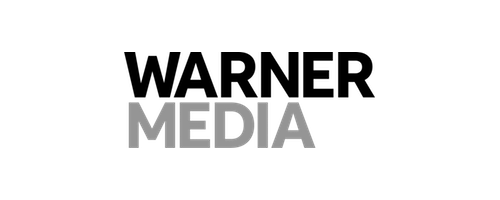
How WarnerMedia became one of the world's largest remote video production teams
Jacob and Eric discuss pre-COVID-19 workflows, how their video teams are adapting to lockdown, the technical challenges they faced and the impact on the industry in the longer term.

AMPAS
AMPAS worked with IPV to develop a system that would let its teams quickly and easily search, find and discover assets throughout its archives. It knew that creating proxies of its assets was the best way to manage its large amount of content.
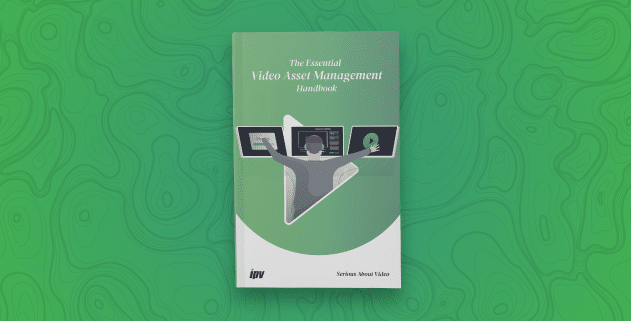
The Essential Video Asset Management Handbook
Learn about the leading edge of video and production asset management and solutions available to succeed in the future of video.
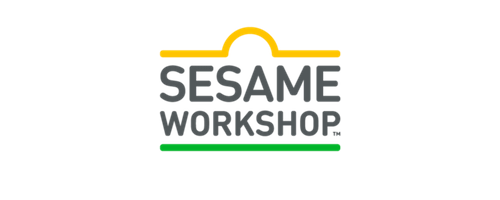
How one of the world's most beloved brands continued to create content through Covid
Shadrach Kisten, CTO, for Sesame Workshop has strategic and tactical oversight of Sesame's technical operations, network, cloud infrastructure, digital media engineering, content and client services.

Hearst
Using Curator, Hearst, one of the largest news networks in the US, has created an internal Distributed Cloud environment where content is ingested and logged locally but made available globally, to all creative staff using IPV’s advanced search functions.
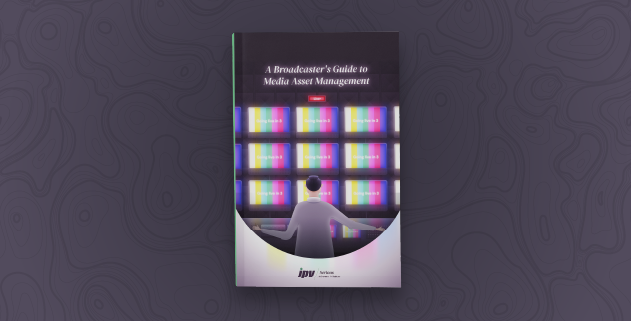
A Broadcaster's Guide to Media Asset Management
Learn how to enable the continued creation of content from home, and prepare for the future of broadcast video management.
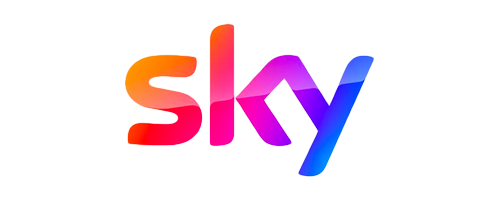
How one of the largest broadcasters in Europe kept on creating through the pandemic
Simon is Head of Operations & Technology at Sky Creative Agency; Sky’s in-house advertising and creative agency and the largest in-house agency in the UK, probably Europe and possibly the world!

The Golf Channel
IPV has worked with the Golf Channel for many years. The relationship began with live proxy creation, but IPV and the Golf Channel and went on to form a strong partnership, delivering many years of highly exciting and relevant content production.

The Future of Video Production
Learn how the leading broadcasters and brands confronted lockdown, retained clients and continued to deliver content from home.
